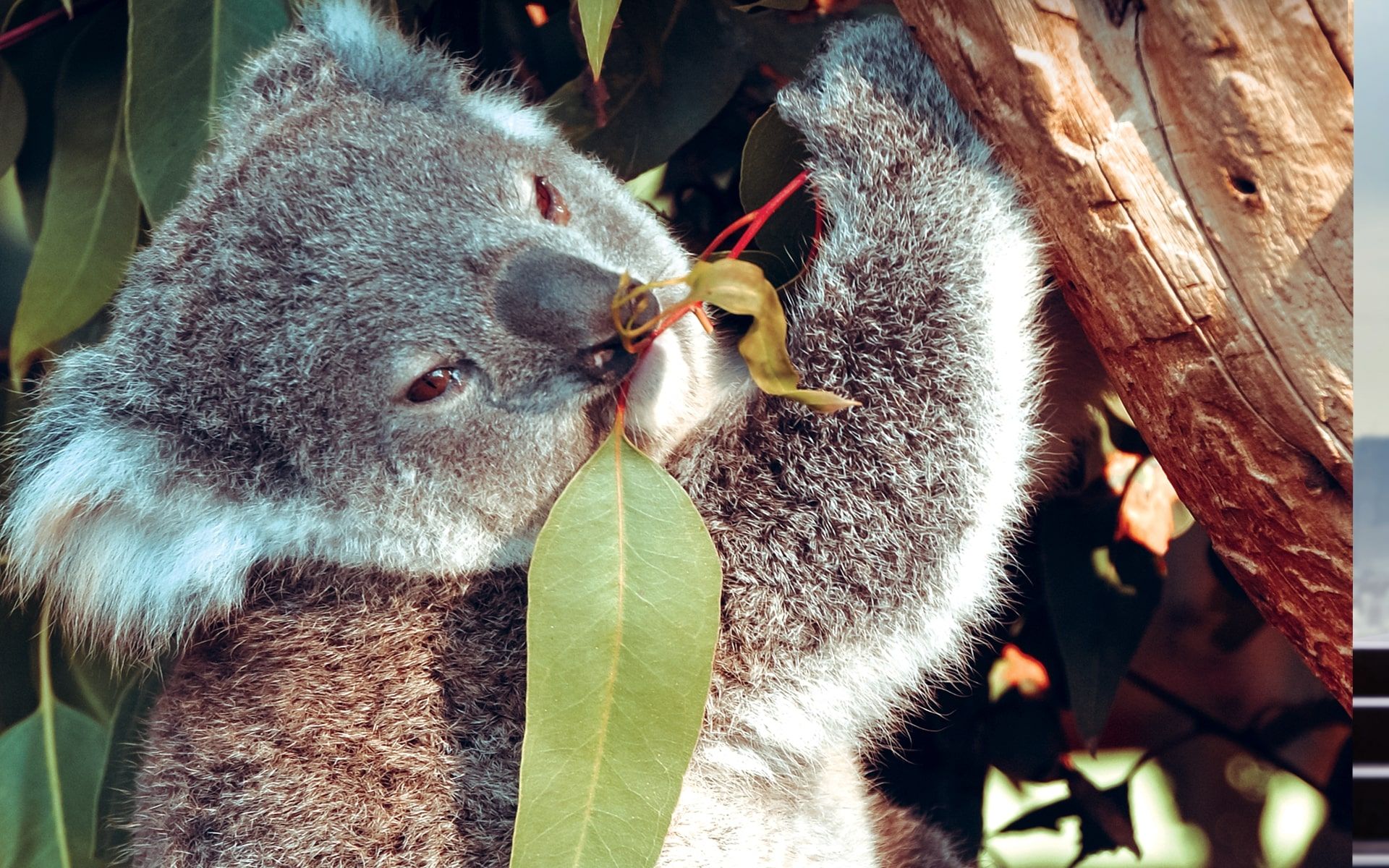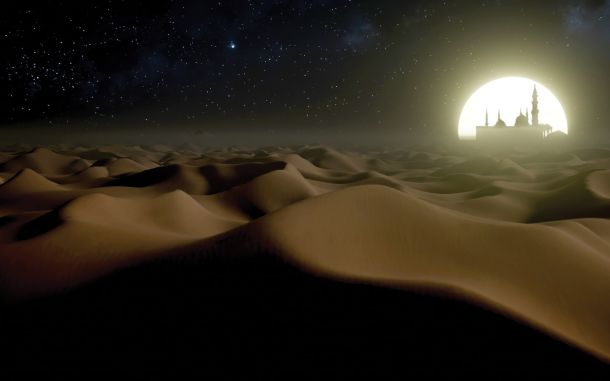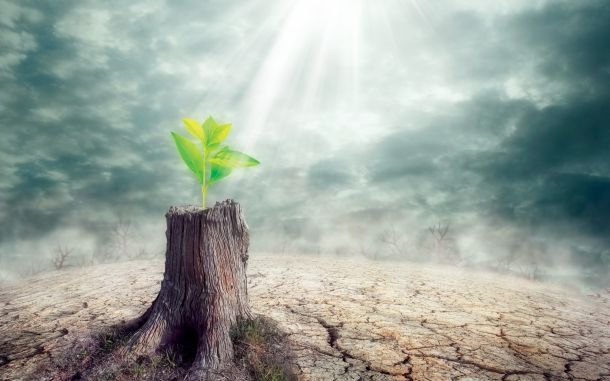Koala

In This Article
-
Thanks to the special qualities given to its digestive organs, the koala is not only protected against the toxic effects of eucalyptus oils but also can get sufficient amounts of food and water from eucalyptus leaves.
-
Koalas move very slowly; their metabolic rate of is very low and this helps it to keep the fermented materials and particles longer in its stomach. Thus, digestion progresses slowly.
-
The heat insulation of the animal is adjusted with the longer protective strands and shorter thick hairs of the fur who lengths vary depending on the season.
The amiable koala (Phascolarctos cinereus), which can often be found sleeping while clinging on to trees, may resemble a teddy bear but is instead a herbivorous marsupial (marsupials are endemic to Australia and Americas, and their main characteristic is they carry their young in a pouch). Being a symbol of Australia, koalas typically have a body length of 23 - 33 inches and weigh roughly 9 - 33 pounds. It is easy to recognize it thanks to its stout round body, a large head, large ears, and a spoon-shaped nose. Its fur is extremely thick, dense, and soft. Its legs are long and it has paws with sharp nails to help the animal climb trees easily.
The koala lives in eucalyptus forests and feeds on eucalyptus leaves that are toxic to other mammalians. As a matter of fact, these trees are an all-purpose system of sustenance for koalas, designed as a magnificent cradle that offers not only shelter but also food and water. The koala prefers to feed on the leaves of only 35 of more than 600 species of eucalyptus available in Australia. An adult koala eats in the same tree as long as a day. In other words, it does not have to hunt for sustenance – eucalyptus trees offer virtually all of its nourishment in its immediate vicinity. Due to the low energy content of the eucalyptus diet, the koala is largely sedentary. It sleeps on a tree for a significant portion of the day, approximately 20 hours. It climbs down only to climb another tree.
As in all marsupials, the young koala is born in the embryonic stage. As if already installed with a navigation app, the joey crawls into its mother's pouch as soon as it is born and attaches itself to one of its mother's teats – like the eucalyptus tree that will serve the koala later in its life, the pouch of its mother provides all the baby needs for about six months. This joey can be likened to a premature human baby who has to be fed in an incubator. The newborn joey measures approximately 19 mm in body length and weighs 5.5 grams. Six months later, its body length reaches 8 inches, its fur develops, and it leaves the pouch in a fully matured and furred form. In this period, it is also weaned. Now, the young koala is ready to begin feasting on eucalyptus leaves. The joey rides on the back of its mother for approximately six months after leaving the pouch.
Miraculous digestion mechanisms
The most amazing part of the koala's body is its digestive system that functions like a biochemical refinement laboratory. All elements of the digestive system, from the liver to the cecum, are created with a special anatomy and physiology. Thanks to the special qualities given to its digestive organs, the koala is not only protected against the toxic effects of eucalyptus oils but also can get sufficient amounts of food and water from eucalyptus leaves. However, any other herbivorous animal may die if it eats these leaves. The koala, on the other hand, consumes these leaves as the primary source of food all through its life.
Although its alimentary canal is roughly similar to those of other herbivorous animals, the extraordinary digestive biochemistry of the koala has been in the limelight for many researchers. The robust 30 teeth located at the very beginning of the digestive system are shaped for special cutting and chewing functions so that they can easily grind up these hard leaves. Their incisors work like scissors to ensure that leaves are broken into pieces while premolars and molars make sure that food is ground and crushed. After they are chewed in the mouth, the ground leaves are sent directly to the stomach through the alimentary canal. The stomach and intestines are equipped with structures that produce special secretions for extracting energy from the leaves.
The key secret to the digestion is in the cecum of the koala. The cecum, which in humans can be found at the start of the large intestines, is the epicenter of a koala’s digestive system. Like other herbivorous marsupials, the koala cannot digest cellulose in the leaves. Microorganisms that can digest cellulose are employed to help this cute animal in this respect. The cecum is a very suitable ecosystem for these microorganisms to live. The microorganisms in this organ decompose cellulose using their secretions and use only a small part of the fermented leaves for themselves, leaving the most part to the koala. The cecum is created with extraordinary characteristics in terms of its size. The koala has the largest cecum in proportion to its body size among all known animals, and its cecum corresponds to approximately 20 percent of the total length of its intestines. With a length of about 78 inches and a diameter of 4 inches, the cecum is a perfect fermentation chamber suitable for bacteria growth. As cellulose is fermented in the chamber, the toxic quality of eucalyptus leaves is eliminated. Thus, the fermentation and microbial processes that occur here produce sufficient energy for the vital needs of the koala. Cytochrome P450, an enzyme produced in the liver, plays a crucial role in the breakdown of the poisons in the leaves.
Koalas move very slowly; their metabolic rate of is very low and this helps it to keep the fermented materials and particles longer in its stomach. Thus, digestion progresses slowly. This process can last for up to 100 hours in the wild, or up to 200 hours in captivity. In short, all members of the digestive system are ensured to function together for the koala's nourishment.
The koala drinks water very rarely. This is because it can meet 40-65 percent of its water requirements from eucalyptus leaves. As the water ratio of the koala's body is very high (up to 77.4 percent) and its digestive system is capable of retaining a high volume of water, it turns out that a significant proportion of water is kept in the cecum in the form of a bulk of wet food.
Like the tree-kangaroo, the koala does not look for shelter. The dense branches and leaves of eucalyptus trees provide the animal with sufficient shelter. Its fur covers 77 percent of its body and offers the best protection in this regard. On average, there are 54 strands of hair in every millimeter of the koala’s fur. The heat insulation of the animal is adjusted with the longer protective strands and shorter thick hairs of the fur who lengths vary depending on the season. Heat insulation is further facilitated by the fact that the fur is darker on the back and the hairs have angular changes depending on the wind.
The combination of all of these diverse elements in order to allow a small animal to thrive in such unique ways is magnificent.
References
- Robert Degabriele, “The Physiology of the Koala,” Scientific American, Vol. 243, Issue 1 (July 1980), pp. 110–117.









